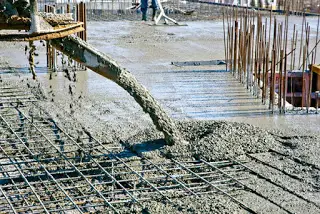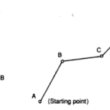There’re a lot of times you start wondering in the field that “workability is directly proportional to” either grade of concrete, water cement ratio, water content, cement content, or what? There’re a lot of factors that affect the workability of concrete and we’ll see some of the factor’s that directly impact the workability.
By directly proportional relation, we mean that if the factor is enhanced the workability is enhanced and if the factor is decreased the workability is decreased. So, we’ll today look into various factors:
Concrete is a widely used construction material that is composed of cement, water, aggregates (such as sand, gravel, or crushed stone), and often some additional admixtures.
One of the key properties of concrete is its workability, which refers to how easily it can be mixed, placed, and compacted in a formwork without segregation or bleeding.
Workability is important for ensuring the
- Strength
- Durability
- Overall quality of the final concrete structure
In this article, we will discuss what workability is, why it is important, and the factors that affect it.

What is Workability of Concrete?
Workability of concrete refers to the ease with which it can be mixed, placed, and compacted without segregation or bleeding.
Workability is affected by the consistency and viscosity of the concrete, as well as the size, shape, and grading of the aggregates.
Concrete with good workability is easy to place, finish, and compact, and it does not require excessive vibration or tamping to achieve proper consolidation.
Like Us on Facebook!
Workability of concrete is directly proportional to
Workability of concrete is directly proportional to:
Subscribe Us on YouTube!
- Aggregate cement ratio
- Time of transit
- Grading of the aggregate
- All of above
The right answer is : c) grading of aggregate.
Also Read: Grading Requirements of Fine Aggregates
Here’s the explanation:
Poor grading of aggregate reduces the consistency of the mix. On the other hand, uniform or good grading of aggregate results in a more workable mix that is easy to use at site. Beside aggregate characteristics, there’re other factors that can enhance the workability of concrete, these are:
- Water-Cement Ratio: A higher water-cement ratio generally results in a more workable mix, although this can come at the cost of reduced strength and durability.
- Chemical Admixtures: Certain chemical admixtures, such as plasticizers and superplasticizers, can increase the workability of the mix without increasing the water-cement ratio.
- Aggregate Characteristics: Smaller, rounder aggregates with a more uniform grading can result in a more workable mix.
- Mixing Method: Machine-mixing and ready-mixing result in more consistent and workable mixes than hand-mixing.
Why is Workability Important?
Workability is an important property of concrete for several reasons:
- Ease of Placement: Concrete with good workability can be easily placed and compacted in the formwork, resulting in a well-compacted, homogeneous mass that fills the formwork completely without voids or honeycombs.
- Good Surface Finish: Concrete with good workability can be easily finished to a smooth surface without any segregation or bleeding, which improves the appearance and durability of the structure.
- Efficient Use of Labor and Equipment: Concrete with good workability requires less effort to mix, place, and compact, which results in lower labor costs and equipment usage.
- Consistency of Strength and Durability: Concrete with good workability ensures consistent strength and durability across the entire structure, reducing the risk of cracking or failure.
Factors Affecting Workability of Concrete:
Several factors affect the workability of concrete, including:
- Water-Cement Ratio: The water-cement ratio is the ratio of the weight of water to the weight of cement in the concrete mix. A higher water-cement ratio results in a more fluid and workable mix, but it also reduces the strength and durability of the concrete.
- Aggregate Characteristics: The size, shape, and grading of the aggregates used in the mix affect the workability of the concrete. Generally, smaller, rounder aggregates with a more uniform grading result in a more workable mix.
- Cement Content: The amount of cement in the mix affects the workability of the concrete. A higher cement content results in a more workable mix, but it also increases the risk of cracking and shrinkage.
- Chemical Admixtures: Chemical admixtures, such as plasticizers, superplasticizers, and air-entraining agents, can be added to the mix to improve the workability of the concrete.
- Temperature and Humidity: The temperature and humidity of the environment in which the concrete is mixed, placed, and cured can affect the workability of the mix. High temperatures and low humidity can cause the mix to dry out and become less workable.
- Mixing Method: The mixing method, such as hand-mixing, machine-mixing, or ready-mixing, can affect the workability of the concrete. Machine-mixing and ready-mixing result in more consistent and workable mixes than hand-mixing.
Conclusion:
Workability of concrete is a critical property that affects the strength, durability, and overall quality of concrete structures. Several factors affect the workability of concrete, including water-cement ratio, aggregate characteristics, cement content, chemical admixtures, temperature and humidity, and mixing method. By understanding these factors, engineers and construction professionals can ensure that the concrete is a good condition.
Further Read: Light weight concrete

















